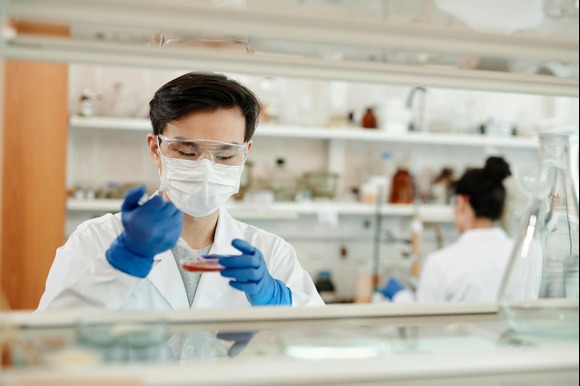China’s biotechnology sector is undergoing a dramatic transformation, rapidly shifting from its former image as a producer of low-cost copycat drugs to a formidable force in global pharmaceutical innovation.
According to an exclusive analysis by Bloomberg News, Chinese pharmaceutical companies initiated the development of more than 1,250 novel drugs in 2023 alone — ranging from cancer therapies to weight-loss medications. This figure exceeds that of the entire European Union and is closing in on the U.S., which launched around 1,440 new drug candidates in the same period.
The data, sourced from pharma intelligence provider Norstella, underscores a profound change in the global landscape of medical innovation. Once plagued by quality concerns and reliant on imitation, China’s biotech sector is now gaining recognition from global regulators and attracting attention from major Western pharmaceutical companies.
“The scale itself is not something we’ve seen before,” said Helen Chen, managing partner at LEK Consulting in Shanghai, who has advised healthcare firms on their China strategy for over two decades. “The products are here, they’re attractive and they’re fast.”
This shift began in earnest in 2015 when China overhauled its drug regulatory framework. At the time, only 160 China-origin compounds were part of the global pipeline — less than 6% of the total, trailing Japan and the UK. The reforms streamlined drug review processes, imposed stricter data quality standards, and introduced greater transparency. China’s national “Made in China 2025” strategy, which targets technological leadership across 10 key industries, further fueled biotech investment.
Daniel Chancellor, vice president of thought leadership at Norstella, noted that the country’s growth trajectory is striking. “Not only is it now almost at parity with the U.S., but it has that growth trajectory. It wouldn’t be sensationalist to suggest that China will overtake the U.S. in the next few years purely in terms of numbers of drugs that it’s bringing through into its pipeline.”
The analysis deliberately excludes generic formulations, reformulations, and biosimilars, focusing strictly on novel therapies. While the volume is notable, the more surprising leap lies in the quality of Chinese innovation. Once doubted for their ability to produce game-changing drugs, Chinese firms are increasingly earning expedited reviews from the U.S. Food and Drug Administration and the European Medicines Agency — designations such as priority review, breakthrough therapy, and fast-track status.
As of 2024, China has even slightly surpassed the EU in securing these accelerated reviews, an impressive feat given Europe’s history of blockbuster drugs like Wegovy.
One prominent example is a cell therapy initially developed in China by Legend Biotech Corp. The therapy, aimed at treating aggressive blood cancers, is now marketed by Johnson & Johnson and has been widely regarded as superior to a competing American product, earning several expedited regulatory designations.
Despite the strides, the total number of Chinese drugs earning these designations still trails far behind the U.S. Many Chinese firms continue to focus on improving existing treatments or refining earlier concepts, rather than pioneering entirely new therapeutic approaches — a high-risk domain still dominated by the U.S., Europe, and Japan.
Nevertheless, Chinese biotech breakthroughs are increasingly attracting Western investment. In 2022, Summit Therapeutics paid $500 million upfront for the U.S. and international rights to a novel cancer therapy from Akeso Inc. that outperformed Merck & Co.’s blockbuster Keytruda in a Chinese clinical trial. The deal was seen as a “DeepSeek moment” for China’s biotech sector, triggering global interest.
In May, Pfizer set a new benchmark, agreeing to a $1.2 billion upfront deal with China’s 3SBio Inc. for a similar cancer drug. According to data from DealForma, these high-value transactions are becoming more frequent, suggesting growing confidence in the global competitiveness of Chinese-origin drugs.
“The volume of potential candidates coming out of China means multinational companies can cast their net wider than ever before,” Chancellor said.
China’s ability to conduct clinical research faster and at lower cost has played a crucial role in this transformation. From lab testing to human trials, every step is expedited by China’s vast patient base and centralized hospital infrastructure. For example, in early-stage trials for cancer and obesity drugs, Chinese researchers can complete patient recruitment in about half the time it takes in the U.S.
Lower research costs allow Chinese firms to run multiple trials simultaneously or rapidly pursue new projects once a concept is validated elsewhere. Since 2021, China has become the leading country for initiating clinical research globally, based on data from GlobalData.
“They can leapfrog competitors in other countries,” said Andy Liu, head of China at Novotech Health Holdings, which specializes in running clinical trials.
Still, U.S. regulators remain firm that positive results from trials conducted solely in China are not enough for approval. Chinese firms aiming to market their drugs abroad must replicate success in international studies with non-Chinese patients — a more complex and time-consuming process.
Industry experts believe that it may still take several years before a large number of China-developed drugs secure approvals from U.S. and EU regulators and achieve widespread use in the West. However, they also view that milestone as inevitable.
China’s biotech innovators range from new startups founded by Western-educated scientists to legacy pharmaceutical giants like Jiangsu Hengrui Pharmaceuticals Co., a former generics powerhouse now reinvented as a research-driven enterprise. After Beijing’s crackdown on generic drug pricing reduced profits, the firm redirected billions of dollars into novel drug development, emerging as the world’s top contributor of new drug candidates between 2020 and 2024.
Out of the 50 companies that produced the most innovative drugs during that period, 20 were based in China — a sharp rise from just five in the prior five-year span.
“As we move forward, the fact that there’s high-quality innovation in China in terms of biotech will no longer be a novelty,” said Ali Pashazadeh, founder and managing director of London-based healthcare advisory firm Treehill Partners. “It’ll just be an accepted part of the norm.”
Still, the growing prominence of Chinese biotech is not without political ramifications. As U.S.-China tensions flare, particularly in areas like artificial intelligence and electric vehicles, some American officials and industry leaders are sounding alarms over losing ground in yet another strategically vital industry.
A U.S. congressional commission recently warned that American leadership in biotechnology — a sector with implications for national security — is under threat. Jack Burnham, a research analyst at the Foundation for Defense of Democracies, said China’s expanding biotech leverage could be weaponized in future conflicts, especially if U.S. patients grow dependent on Chinese-developed medicines.
Calls are mounting in Washington for measures to curb China’s rise in biotech, including export controls on lab equipment, investment restrictions, and domestic policy reforms to accelerate U.S. clinical trials. U.S. Health Secretary Robert F. Kennedy recently vowed to “Make American Biotech Accelerate.”
Despite the heightened geopolitical rivalry, Chinese firms like Akeso remain committed to introducing their therapies to global markets.
“The pharma industry is the best industry in the world,” said Akeso CEO Michelle Xia in an April interview. “At the end of the day, what we do benefits patients in China, in the U.S., and all around the world.”






